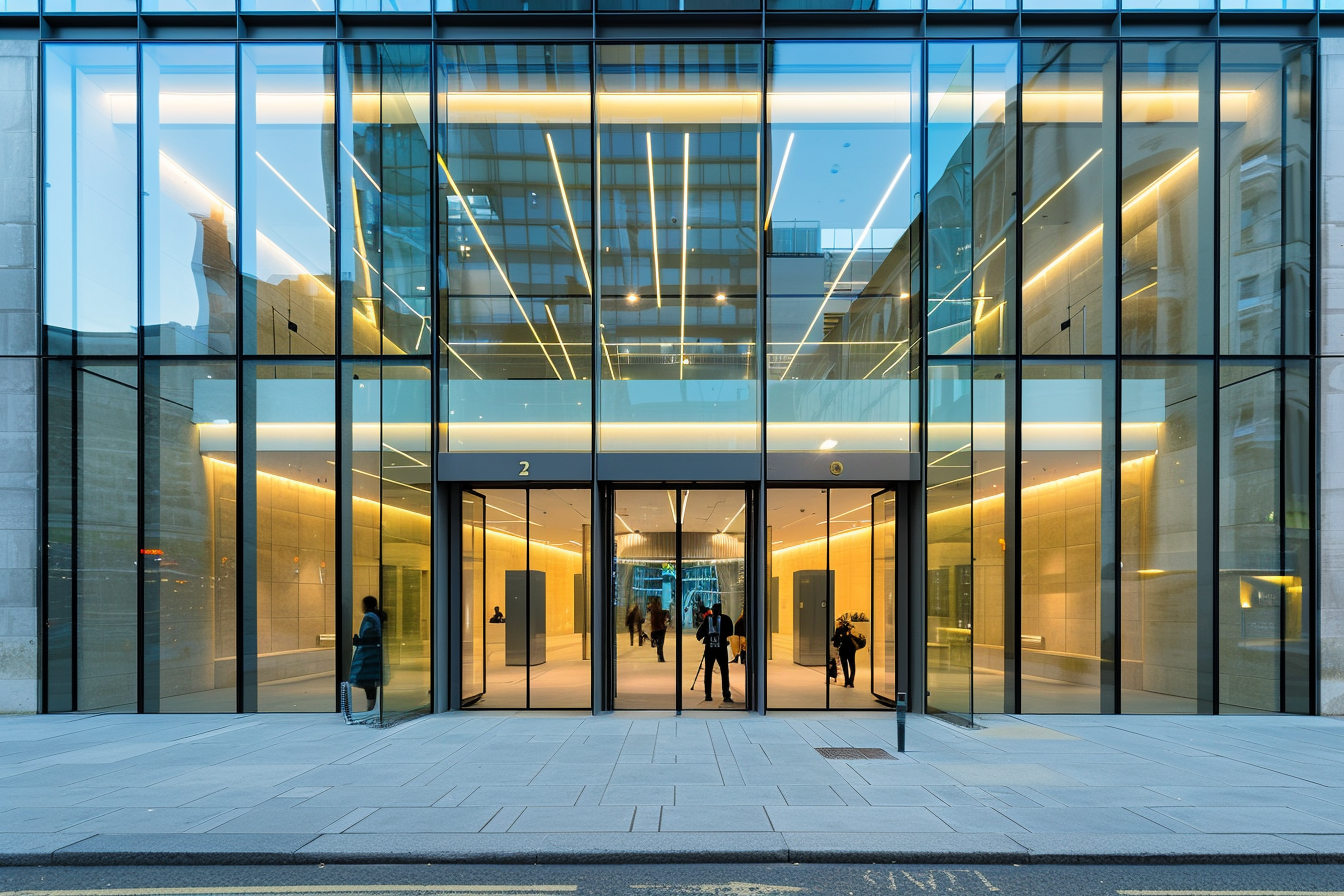Glass as an Architectural Material

1. Introduction
Glass is one of the most defining materials in contemporary architecture, symbolizing transparency, innovation, and connection between interior and exterior spaces. Beyond its aesthetic appeal, glass plays a critical role in the performance of buildings—contributing to daylighting, thermal comfort, acoustic control, and energy efficiency. For recent architecture graduates, a deep understanding of glass as a material is essential for informed design decisions that balance form and function. This article explores the properties of architectural glass, the different types available, performance considerations, and practical applications across diverse building contexts. Through detailed case studies and actionable guidance, it aims to bridge the gap between theory and real-world implementation.
2. Properties of Glass in Architecture
2.1 Transparency and Light Transmission Glass enables the penetration of natural light, enhancing occupant wellbeing and reducing reliance on artificial lighting. Visible light transmittance (VLT) measures how much light passes through a glass pane. High-VLT glass is ideal for maximizing daylight but may require shading or coatings to mitigate glare.
Pro Tip:Pair high-VLT glazing with automated blinds or fritting patterns to balance daylight with visual comfort.
2.2 Strength and Safety Architectural glass is engineered for strength using processes like tempering (heat treatment) and lamination (bonding layers with interlayers). Tempered glass is up to five times stronger than annealed glass and breaks into small granular chunks rather than sharp shards, making it safer for use in public and high-traffic areas.
2.3 Thermal and Acoustic Performance Low-emissivity (low-E) coatings and insulated glass units (IGUs) improve thermal performance by reducing heat transfer. Acoustic laminates or double/triple glazing enhance sound insulation.
3. Types of Architectural Glass
3.1 Float Glass The base product for all architectural glass. It is flat, clear, and can be further treated to create other glass types.
3.2 Tinted and Reflective Glass Tinted glass reduces solar gain by absorbing sunlight. Reflective glass incorporates metal oxide coatings to reflect heat and light, ideal for hot climates.
3.3 Low-E Glass Low-emissivity coatings minimize infrared radiation while allowing visible light. Low-E glass significantly improves energy efficiency.
3.4 Laminated Glass Composed of two or more layers bonded with a PVB interlayer, offering safety and acoustic control.
3.5 Insulated Glass Units (IGUs) IGUs consist of two or more glass panes separated by an air or gas-filled cavity, offering superior thermal performance.
4. Performance Criteria and Standards4.1 Energy Codes and Certifications Architectural glass must comply with national and international codes such as:
- ASHRAE 90.1 (Energy Standard for Buildings)
- LEED (Leadership in Energy and Environmental Design)
- EN 1279 (European standard for IGUs)
Pro Tip: Use simulation software like THERM or WINDOW from LBNL to model the thermal behavior of glass assemblies.
4.2 U-Value and Solar Heat Gain Coefficient (SHGC)
- U-Value measures heat transfer. Lower is better.
- SHGC indicates how much solar radiation passes through. Optimal values vary by climate.
5. Design Applications of Glass5.1 Façades and Curtain Walls Glass curtain walls allow architects to create lightweight, visually striking facades that maximize views and natural light. Structural glazing systems eliminate the need for external framing.
5.2 Skylights and Roof Glazing Used to introduce light into deep plan spaces. Requires careful detailing to prevent overheating and leaks.
5.3 Interior Partitions Laminated or frosted glass partitions help maintain visual openness while providing acoustic and spatial separation.
Pro Tip: Incorporate fritting or ceramic printing on glass to reduce bird collisions and glare in large curtain walls.
6. Considerations by Context6.1 Climate
- Hot climates: Use reflective or spectrally selective low-E coatings.
- Cold climates: Opt for triple glazing with high SHGC.
6.2 Urban vs. Rural
- Urban: Prioritize acoustic insulation and privacy.
- Rural: Emphasize landscape integration and natural daylight.
6.3 Budget and Scale
- Custom curved or smart glass increases cost.
- For tight budgets, standard IGUs or tinted glass offer effective performance.
7. Case Studies7.1 The Crystal, London (Sustainable Cities Initiative by Siemens) The building uses high-performance glass façades with triple glazing and solar shading to achieve net-zero operational carbon. The use of insulated low-E glass significantly reduces energy consumption.
7.2 Fondation Louis Vuitton, Paris (Gehry Partners) The design features curved laminated glass sails that required advanced digital modeling and custom fabrication. The glass is treated to reduce solar gain while maintaining transparency and sculptural effect.
7.3 Apple Park, Cupertino Apple’s headquarters features the largest curved glass panels in the world. IGUs with solar control coatings ensure thermal comfort while preserving the transparent aesthetic.
Pro Tip: Work closely with glass manufacturers early in the design to understand fabrication limits, lead times, and cost implications.
8. Conclusion Glass in architecture offers a rich palette of design possibilities, combining beauty with performance. From façades to interiors, understanding the properties, types, and performance metrics of glass helps architects make informed decisions that support sustainability, occupant wellbeing, and spatial experience. For recent graduates, mastering this material is essential for translating design concepts into efficient, buildable solutions. Whether designing a modest office or a landmark cultural institution, an architect's grasp of glass technology is a crucial asset in contemporary practice.